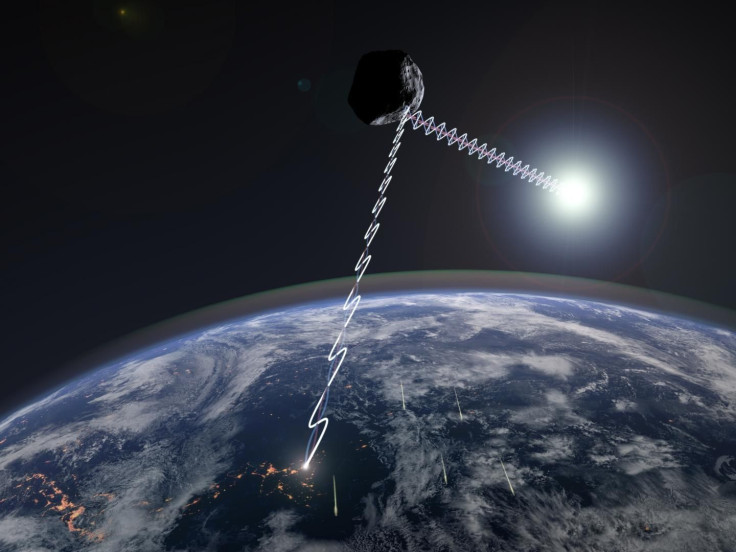Near-Earth Asteroid 3200 Phaethon Reflects Light In Strange Way, Astronomers Discover

A group of scientists has discovered that 3200 Phaethon, the space rock that came within 6.5 million miles of our planet last year and is responsible for the annual Geminid meteor shower, reflects light in a strange manner.
The 20,000-feet wide asteroid is scheduled to make a close pass by Earth anytime soon, but scientists keep observing its behavior to better understand its features, particularly the blue color of its surface. One such project, led by an international team of astronomers, found the rock could be reflecting much less light than they originally thought.
Observing 3200 Phaethon from 1.6-m Pirka Telescope at Nayoro Observatory in Hokkaido, Japan, the group studied how the object reflects light. The observation revealed at some illumination angles, the asteroid was reflecting highly polarized light, even more than other bodies of the same size in the solar system.
Polarization occurs when vibrations of a transverse wave, especially light, is restricted to one direction wholly or partially. Scientists have been conducting studies to understand how the phenomenon gets affected when sunlight reflects from the surface of celestial bodies. But, in this case, the strange levels of polarizations at some angles presents a new mystery altogether.
Though the exact answer to this question still remains unknown, the group stated the phenomenon could be explained if the asteroid in question is reflecting much less light than they originally estimated. They stressed if the low percentage of light reflected from the asteroid is being scattered multiple times before reaching the observers on Earth, such levels of polarization could be witnessed at some angles.
"If the albedo (percentage of reflected light) is lower than previously thought, that would reduce the effectiveness of multiple scatterings; so that strongly polarized light that has only been reflected a single time would dominate," Takashi Ito, the lead author of the research, said in a statement.
That said, the idea perfectly fits the 3200 Phaethon. Its surface is covered with loose rubble, which could be causing light reflected by one part of the surface to strike another before reaching the observer. However, the dampened light that would reduce the effectiveness of these scatterings could be a result of different factors.
According to the group, either the surface of the asteroid could be too dark to reflect high levels of light or the rubble covering its surface could be made of a highly-porous material or larger grains, which could form during the space rock’s close solar flybys. In sun’s vicinity, the surface of the asteroid could be heated up to a whopping 1,000 degrees Celsius.
That said, future missions to 3200 Phaethon could reveal more of its characteristics including the nature of its surface. Japanese space agency JAXA plans to launch a probe in 2022, one that would fly by the rock and make detailed observations.
The study titled, “Extremely strong polarization of an active asteroid (3200) Phaethon,” was published June in the journal Nature Communications.
© Copyright IBTimes 2024. All rights reserved.





















